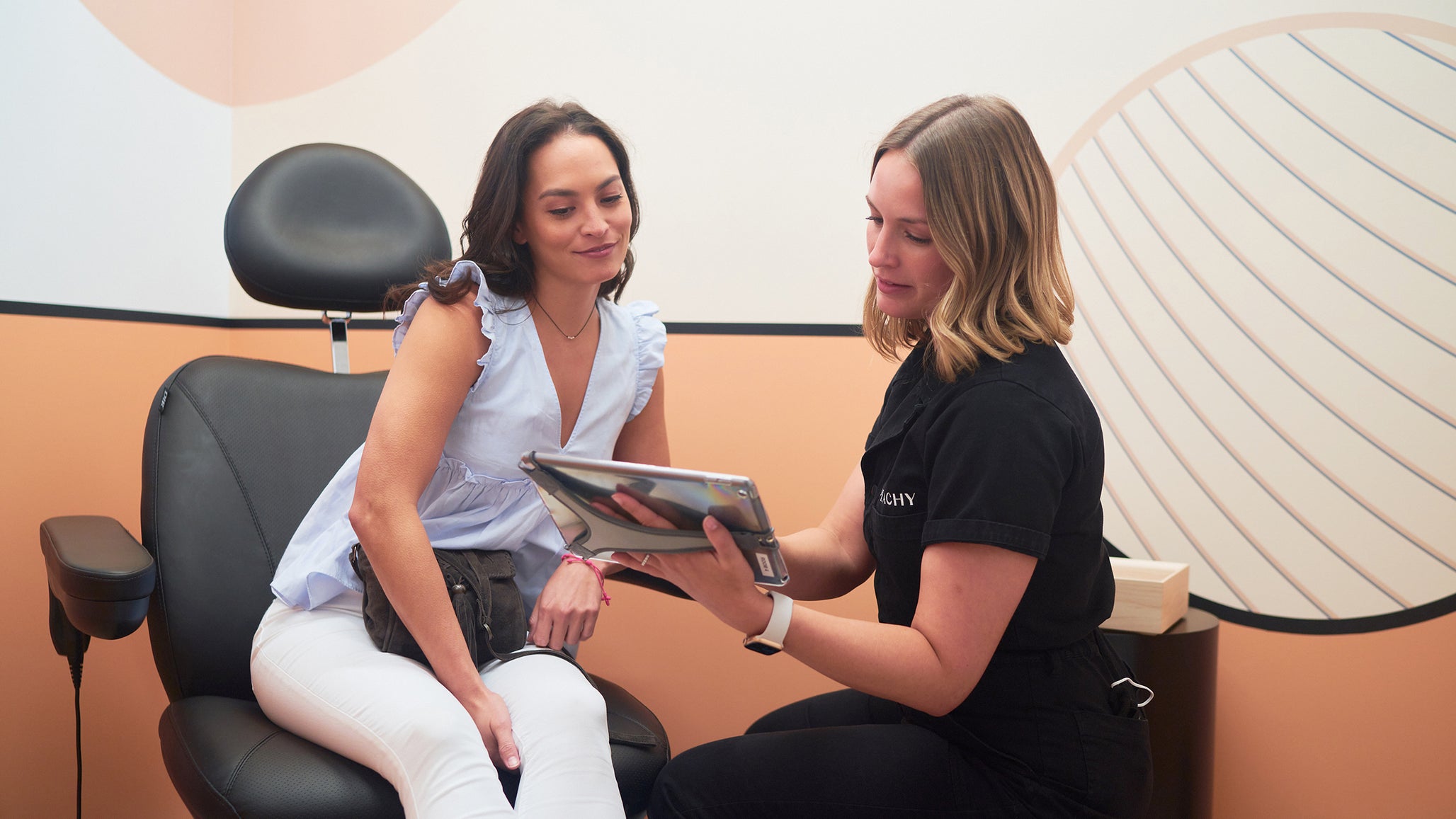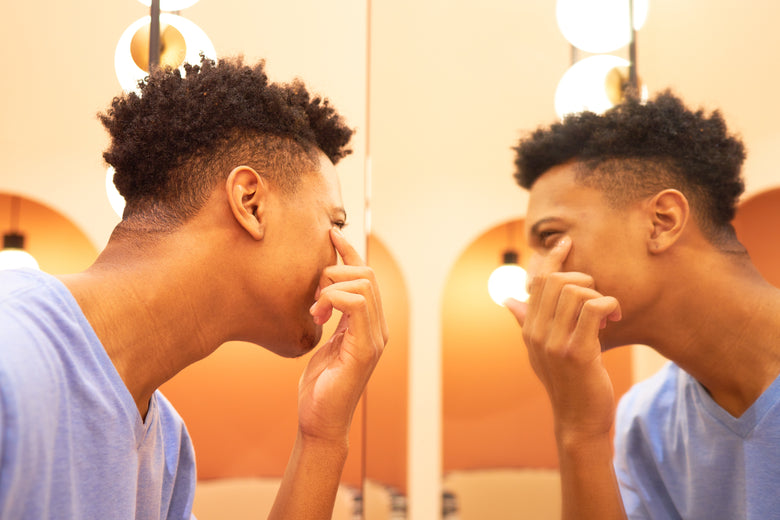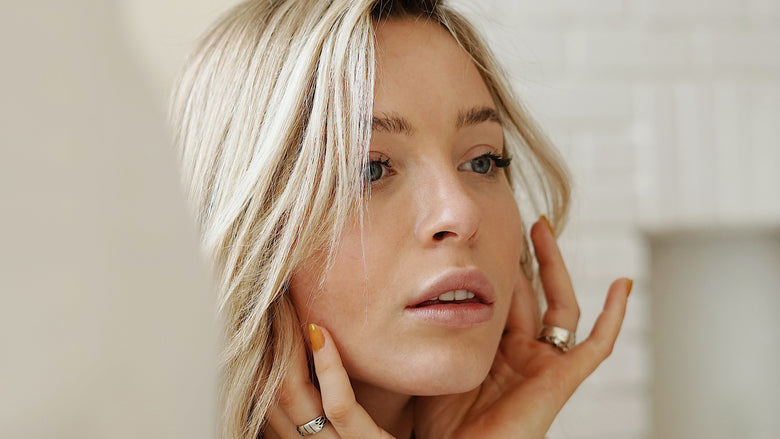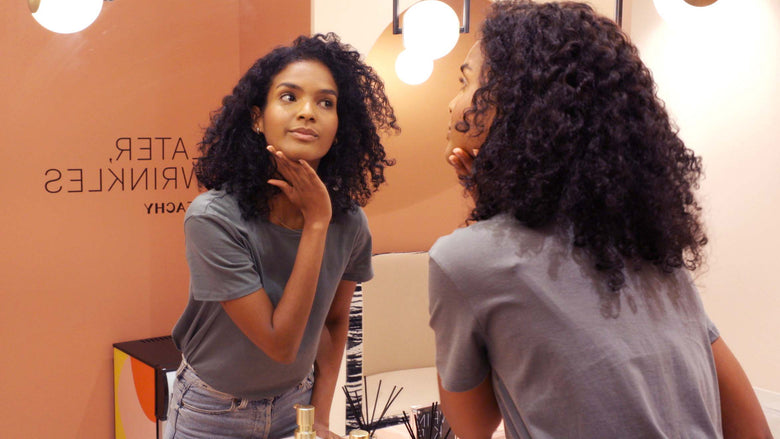Any number of things may come to mind when someone brings up botox. It’s seemingly been around forever, everyone knows about it, and yet the misconceptions from some of its earliest days live on, making it something of an enigma.
What is botox exactly?
Botox® is a neuromodulator tailored to treat and prevent wrinkles of the face. Others include Xeomin®, Dysport®, and Jeuveau® – all FDA-approved brands that act through the same general mechanism.
Being a neuromodulator, botox works by relaxing muscle movement just enough to inhibit wrinkling in skin. The three muscle groups we specialize in:
Frontalis muscle – “worry lines” across the forehead.
Orbicularis oculi muscle – “crow’s feet” along the outer eye portions.
Procerus and corrugator muscles – “frown lines” between eyebrows.
Consequently, they are the most closely studied areas of the face for botox and proven to respond well to it.
Botox is non-invasive, non-altering
Permanent lines manifest as repeated muscle contractions cause skin tissue like collagen and elastin to break down over time. The advantage of botox over its alternatives comes down to its ability to diminish existing wrinkles and prevent future ones from surfacing.
Botox is doubly preventative in the sense that a well-timed routine will keep a person from having to elect for more invasive procedures later on.
Why is that? Wrinkle progression. The main driver of wrinkles forming between the ages of 20 and 50 is the unmanaged advance from self-correcting, “dynamic” lines into the permanent, “static” kind. While certain life factors determine how much or how little skin matures, botox works to dramatically slow, if not halt, this aspect of the aging process.
When should I start getting botox?
Whenever you feel comfortable! To get the full preventative benefits of botox, you should begin using it before dynamic wrinkles progress to static wrinkles. For most people, this is around age 25 to 30, though everyone is different.
You can actually check for dynamic wrinkles at home:
First look in the mirror.

Show surprise! Do you see lines along your forehead when you raise your eyebrows high?

Furrow your eyebrows. Are there lines that form in between your eyebrows?

Make an exaggerated smile. Are you finding lines along the outer portions of each eye? (i.e. crow’s feet)?

If you answered yes to any of the questions above, you likely have dynamic wrinkles. And that’s okay. Aging skin is completely normal!
That said, if managing your complexion is meaningful to you, or if you’re just wanting a refreshed look, there’s no time like the present.
Citations
Carruthers JA, Lowe NJ, Menter MA, et al.; BOTOX Glabellar Lines I Study Group. A multicenter, double-blind, randomized, placebo-controlled study of the efficacy and safety of botulinum toxin type A in the treatment of glabellar lines. J Am Acad Dermatol. 2002;46(6):840-849.
Carruthers JD, Carruthers A. The use of botulinum toxin type A in the upper face. Facial Plast Surg Clin North Am. 2006;14(3):253-260.
Cavallini M, Cirillo P, Fundarò SP, et al. Safety of botulinum toxin A in aesthetic treatments: a systematic review of clinical studies. Dermatol Surg. 2014;40(5):525-536.
Michaels BM, Csank GA, Ryb GE, Eko FN, Rubin A. Prospective randomized comparison of onabotulinumtoxinA (Botox) and abobotulinumtoxinA (Dysport) in the treatment of forehead, glabellar, and periorbital wrinkles. Aesthet Surg J. 2012;32(1):96-102.
FDA approves Botox Cosmetic to improve the appearance of crow’s feet lines [news release]. Silver Springs, Md.: U.S. Food and Drug Administration; September 11, 2013. http://www.fda.gov/newsevents/ newsroom/pressannouncements/ucm367662.htm.
Binder, W. Long-term Effects of Botulinum Toxin Type A (Botox) on Facial Lines. JAMA Facial Plastic Surgery. Nov/Dec 2006.
Cohen, J and Ozog D. Botulinum Toxins: Cosmetic and Clinical Applications. 2017.




